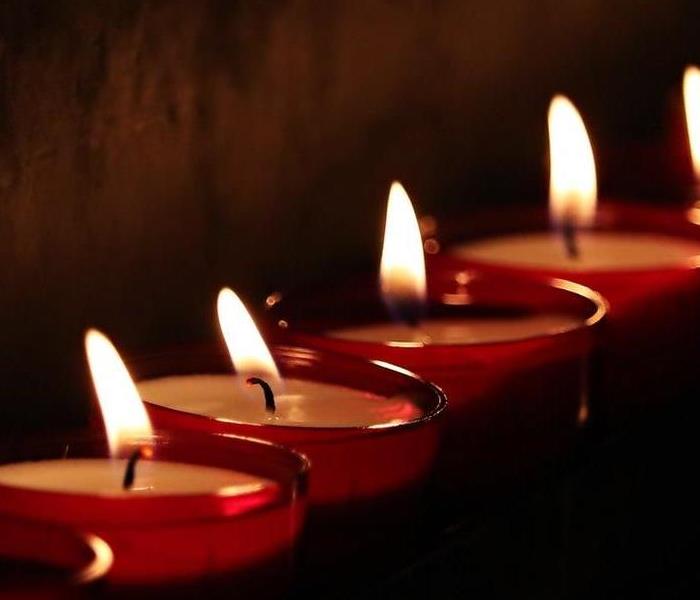Why is Candle Smoke Flammable?
2/21/2020 (Permalink)
The cheapest and most widely used candle is made of paraffin—which is derived from petroleum. When burned, it releases a toxin called toluene, which has been found to cause DNA strand breakdown, affecting the nervous system.
When you are burning a candle, you are essentially vaporizing the liquid wax into a gas that is flammable. This vapor can then be used as fuel for the candle flame. It is this vaporized wax that fuels all candle flames used with conventional wax-based candles. Click here to read more.
Smoke from candles is actually soot. Smoke is just soot and other particulates carried on the hot air rising off the flame. When you put the top on a jarred candle and trap the smoke, it cools. And, the particulates in the candle settle onto the candle and the inside walls of the jar.
Fireplaces, cigarettes and the burning of candles can all result in soot stains on walls. Though soot collects on other surfaces in the home, soot stains are easy to spot on light-colored walls. Aside from being unattractive, soot can create a health hazard.
In general, candles won’t set off your smoke alarm. However, they can cause a fire. SERVPRO of Edgewater/Deale-Churchton/Lothian has provided fire damage remediation and reconstruction to several properties where candles were the cause of the fires.






 24/7 Emergency Service
24/7 Emergency Service